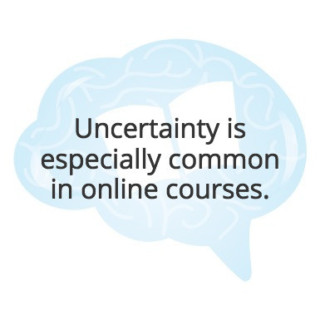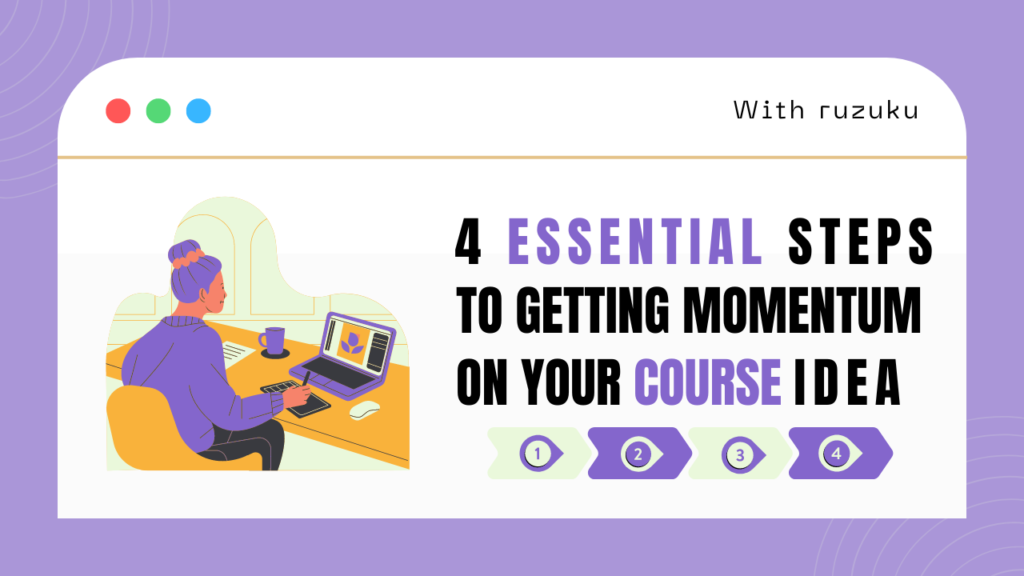Note to readers: this post was originally published in 2013. Since the topic is still as relevant today as then – perhaps even more so – we updated it to help you supercharge your student engagement.
You want your students to get results.
But they can’t do that if they don’t participate in your course.
And figuring out how to foster engagement and participation is one of the biggest challenges you’ll face as a course creator.
If your students aren’t involved from beginning to end, they won’t see the benefits and they’re unlikely to finish as a result.
So what happens once that initial burst of enthusiasm fades? How can you help students stick with your program and learn what they need to be successful?
Turns out there are five separate keys to creating a course that will get your students the results they desire. Put them all together and you have an easy-to-remember acronym known as the “SCARF” model.
- Status
- Certainty
- Autonomy
- Relatedness
- Fairness
Put all these aspects together and you’ll have a foolproof formula for getting and keeping your students engaged.
Let’s look at each approach in more detail.
Status
Status refers to how people think that they’re being treated.
We’re all deeply sensitive to our perceived social status: Do people like me? Does what I say matter? Does anyone care about me?
 As an online teacher, you have to work hard to ensure that you recognize the achievement and hard work of every student in your online course.
As an online teacher, you have to work hard to ensure that you recognize the achievement and hard work of every student in your online course.
Make your students feel welcome. Be warm and genuine. You can set them at ease, whether they’re online course veterans or anxious newbies.
And don’t be afraid to show your enthusiasm.
You can incorporate emoticons, exclamation marks, and bold or italicize important words in your written communication. But don’t overdo it! Aim for a conversational tone, and be sparing with your use of emoticons so you don’t appear unprofessional.
Here are some ways you can help students feel recognized:
1. Give them credit for good work.
Highlight the best work your students submit whenever possible, so others can see it.
2. Validate your participant’s point of view.
No comment is bad when it comes to online engagement (barring rudeness or trolls). Thank them for the time they spent commenting on your post instead of disagreeing with their viewpoint.
3. Encourage non-participants to engage.
If you see that your forum or private group is dominated by more expressive people, steer the conversation with questions and comments that can encourage quiet participants to share their perspectives.
You can also reach out individually to non-participants to see if you can encourage them to join into the conversation. Some students may be too busy or feel intimidated by technology but by reaching out you can show them they’re valued.
4. Recognize their improvement.
Status grows when your students learn and get better at implementing that learning.
Whenever you interact with your students, whether in a daily chat on Facebook or an online forum, make sure that your interaction changes their lives for the better in tangible, measurable ways.
5. Make your students active contributors to your work.
Different communities value different things: experience, helpfulness, interaction, etc.
Students’ status will increase when they see they can add value within the group. So allow participants to express their thoughts and share their content. You’ll build engagement, trust, and loyalty.
An activity to boost Status
Question to ask yourself:
What can I do increase participants’ perceived status and recognize their hard work?
Certainty
Any kind of significant change generates uncertainty.
Uncertainty is especially common in online courses because the context feels different.
 Your students will feel more isolated and less comfortable than they would in an in-person workshop or one-on-one conversation.
Your students will feel more isolated and less comfortable than they would in an in-person workshop or one-on-one conversation.
That’s why they must know what they are trying to accomplish every step of the way.
There are two course components that support students’ sense of certainty.
The first is usability. Usability means how well software can be used to achieve a specific outcome without unnecessary hassles.
If you use a platform like Ruzuku, you’re all set. Ruzuku helps eliminate navigation difficulties and confusion around course structure, because it’s designed around students’ needs and with input from real-world courses.
The second is clear guidance. Students need personal support so they don’t get stuck spinning their wheels. Nothing hinders a student’s progress like not knowing what to do next.
There are many great ways to help students keep moving forward.
1. Provide step-by-step explanations.
Explain to new buyers exactly what will happen after they purchase. Will they get a welcome email with the passwords? Will they instantly be redirected to another page? And what should they do first after they sign up?
2. Don’t assume everyone is tech-savvy.
Give all your new students a course navigation cheat sheet. If your course involves a private Facebook group or a forum, give clear directions on how to set up profiles in these sites as well as interact with others.
3. List the main objectives.
Include a list of objectives for each module and the ways they can be met. Will students need to pass a test? Record a performance? Apply what they learned? How will you and they know that their objectives were achieved?
4. Provide tech support (when possible).
If your budget does not allow you to hire a permanent tech support person, create a list of FAQs with troubleshooting techniques and offer your help on a weekly Q&A call.
5. Assess their progress.
Consistently evaluate your participants’ expectations and satisfaction through mini-evaluations and adapt your course based on their feedback.
An activity to boost Certainty
Question to ask yourself:
How can I help students feel confident and competent as they navigate my course?
Autonomy
People love to have a sense of control and self-direction.
Your customers should feel like they are in the driver’s seat and in charge of their own learning. Although it’s your course, it is important that they feel empowered as well.
 Here are some tips on giving your students a sense of autonomy:
Here are some tips on giving your students a sense of autonomy:
1. Explore the possibilities.
Introduce main concepts but allow students to figure out their own solutions.
For example, you could assign your participants to different groups and then ask them to discuss the solutions they came up with.
2. Provide different options for assignments.
Let students choose how to complete some assignments. They’ll feel empowered and they’ll be more engaged with your content.
3. Present information in various formats (within reason).
Today’s learning happens on the go. Maybe your participants will listen to a podcast and then continue with a downloaded PDF, or perhaps they’ll watch a video clip to get a better understanding of the material.
4. Encourage students to set goals.
Make sure to monitor their progress towards those goals. Continued progress is motivating. It will increase their sense of ownership and excitement.
5. Spice up the conversation.
If your forums are dull or boring, try setting up contests.
For example, you could offer a free consultation or blog feature to students who show the highest levels of participation.
6. Give them space, but not too much.
Allow your students to find their own solutions, make mistakes, struggle, and overcome their fears. Check on those who seem withdrawn — that’s especially important in online environments.
Regularly remind your students that you care about their success and reward them along the way.
An activity to boost Autonomy
Question to ask yourself:
How can I support participants’ desire for self-direction?
Relatedness
Everyone wants to belong.
Your participants want to feel connected — to be a part of the community. It’s up to you to reach out and make sure everyone is engaged with your course.
 Some effective strategies we’ve seen include:
Some effective strategies we’ve seen include:
1. Create small groups.
Structure the course into smaller groups in order to increase engagement.
For example, you could form small teams for projects or assign accountability partners who can support each other through the entire program.
2. Create a shared language.
Use specific language to “brand” your course and create a unique course culture. This makes it feel more valuable and exclusive while giving your students a sense of inclusion within the group.
For example, here at Ruzuku we use the terms “instructors” and “guides”interchangeably. These terms help to communicate our unique vision and culture within our community.
3. Stay in touch with each student.
Reach out to each of your students privately to make sure everyone feels comfortable and that the course’s pace is reasonable.
4. Make it easy to interact.
Provide discussion questions or prompts that encourage sharing and vulnerability. Create a space where students feel comfortable sharing stories and personal experiences.
5. Understand their motivations.
Encourage students to share their “why” or motivation for taking the course.
An activity to boost Relatedness
Question to ask yourself:
What can I do to foster a sense of belonging and togetherness?
Fairness
By the time your course ends, you want everyone to feel like they’ve gotten a fair share of your advice and attention throughout the course.
 You don’t want people to regret signing up for your course, feeling like they should have found the basic information for free or invested in a program from another expert.
You don’t want people to regret signing up for your course, feeling like they should have found the basic information for free or invested in a program from another expert.
So keep fairness in mind from the very beginning.
1. Cut out anything unnecessary.
People have strong relevance filters and they hate wasting time. Every piece of information in your course should be valuable. Vet your course for any fluff and remove unnecessary content, activities, and questions.
2. Create a “winners circle”.
Consider creating an exclusive Facebook group for those who have completed your course. This provides a great networking opportunity as well as an additional incentive to complete the course.
3. Follow up quickly.
Make sure everyone gets value and enjoyment from your course. Don’t wait for people to contact you — follow up proactively and offer additional value to people who seem to harbor even the slightest sense of disappointment.
For example, you could offer a free 30-minute individual coaching session, access to another upcoming program, or a copy of your book or other paid resource.
An activity to boost Fairness
Question to ask yourself:
How can I ensure that participants feel my program is fair to them and they are happy with the outcome?
Help your students succeed
Say goodbye to the days of low engagement and students who vanish from your online course without a trace.
Now you know five excellent ways to help your students successfully across the finish line.
The more suggestions you’re able to implement from this post, the more engaged and excited your students will be.
So look at your current courses. Are there any strategies that you can use right away? Add these to your plan.
Next, figure out which of the other five keys to engagement will have the biggest impact on your online course. Which strategies will you use to support it? What prep work should you do so that your next course is the best it can be?
Don’t ever think that your students’ success is outside of your control.
Remember the SCARF model and keep improving — for your sake and your students.
Which of the strategies will you implement first? And do you have any other recommendations for keeping students engaged in your online course? Share with us in the comments!
Attribution
These tips are based on Ruzuku’s interview with Dr. Marina Kostina, CEO of Wired at Heart. Marina earned her Ph.D. in distance education and has spent many years researching engagement in online courses and learning communities. Visit Marina’s website to learn more about her work.
The SCARF model is adapted for online courses from the work of David Rock, the Director of the NeuroLeadership Institute and author of ‘Quiet Leadership,’ ‘Your Brain At Work,’ and ‘Coaching With The Brain In Mind.’ You can learn more about David’s work by visiting the NeuroLeadership Institute’s website.





6 Responses
These are fabulous tips. Thanks for sharing them with us! I’m doing most of these already, but could definitely do a better job of spelling out exactly what will happen after someone enrolls.
NOTE: It would be appropriate for a responsible training organization such as Ruzuku to provide attribution for ideas it uses.
The SCARF model comes from the work of David Rock, author of, ‘Quiet Leadership,’ ‘Your Brain At Work,’ and ‘Coaching With The Brain In Mind.’ A full article is available here. http://www.davidrock.net/files/NLJ_SCARFUS.pdf
You can find more about Dr. Rock and his work at http://www.neuroleadership.com/global/home
Thanks Sue — this post was based on a webinar we hosted with Dr. Marina Kostina (http://www.wiredatheart.com/author/mkostina/). Sounds like she incorporated Rock’s SCARF model into her presentation. Thanks for the links!
I wrote to Marina about it.
My point is that, as trainers, it’s a good idea to provide attribution when we incorporate someone else’s ideas into our work It takes no time and it doesn’t diminish our credibility.
Absolutely!
I love the part about “belonging”. The best course I ever took was a small, tight group and we all became close, shared in between classes and it was the main reason that I actually completed the course. Left to my own devices, I rarely cross the finish line.
Thanks for the great tips!
Nina